*This post may have affiliate links, which means I may receive commissions if you choose to purchase through links I provide (at no extra cost to you). As an Amazon Associate, I earn from qualifying purchases. Please read my disclaimer for additional details.
Drills play a critical role in any workshop. Whether you’re a DIY enthusiast or someone with vast experience handling household repairs, you can’t ignore the fact that having a drill is a must.
But did you know that different drills depend on the kind of work? There are over 20 types of drills designed to handle various tasks.
Our detailed guide covers some common types of drills and their functions.
Table of Contents
16 Types of Drills
Drilling tools come in handy whether you want to attach two items, mount something on the wall, or unscrew tightened screws.
Here are some of the most common types of drills.
1. Hand Drill

A hand drill is a traditional type of drill that’s used for light jobs. The manual drill has a driving wheel that you spin using the turning handle. It moves with the chuck when the wheel spins.
Apart from being common in woodworking, the hand drill is also used by people who work with circuit boards and jewelry as they need responsiveness and accuracy.
Modern drills have a wide bit selection designed for different purposes.
2. Brace Drill
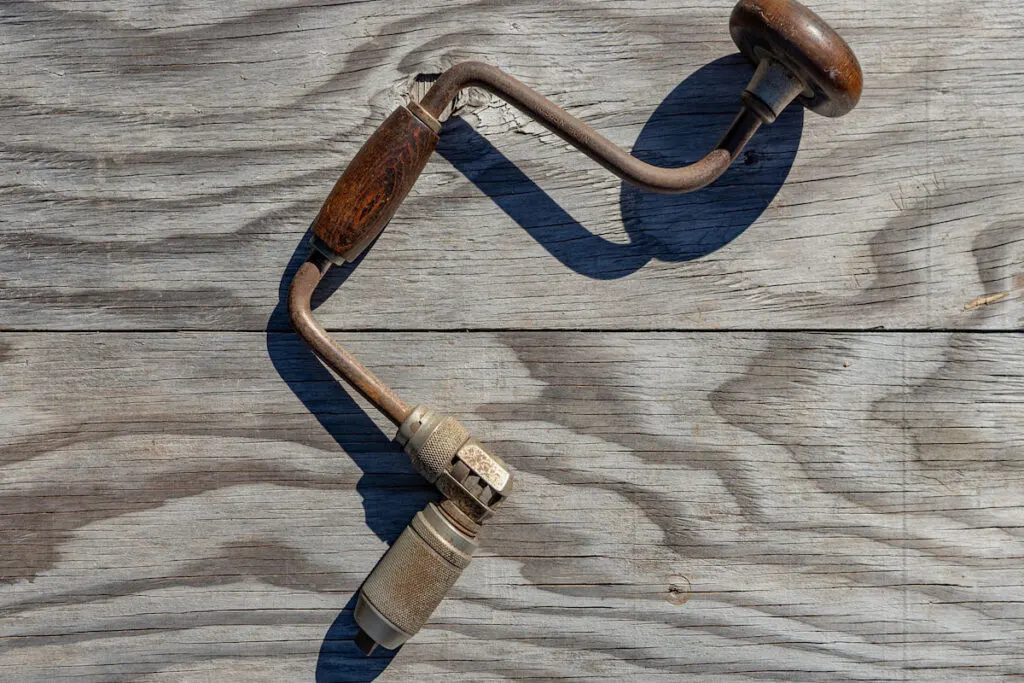
A brace drill is more of a manual tool with a U-shaped spindle. The manual drill is cranked to deliver more torque.
When using this drill, you need to have one hand hold the spindle while the other rotates the second spindle to make a hole in the wood. It’s often used to pierce wood or create holes in it.
3. Cordless Drill
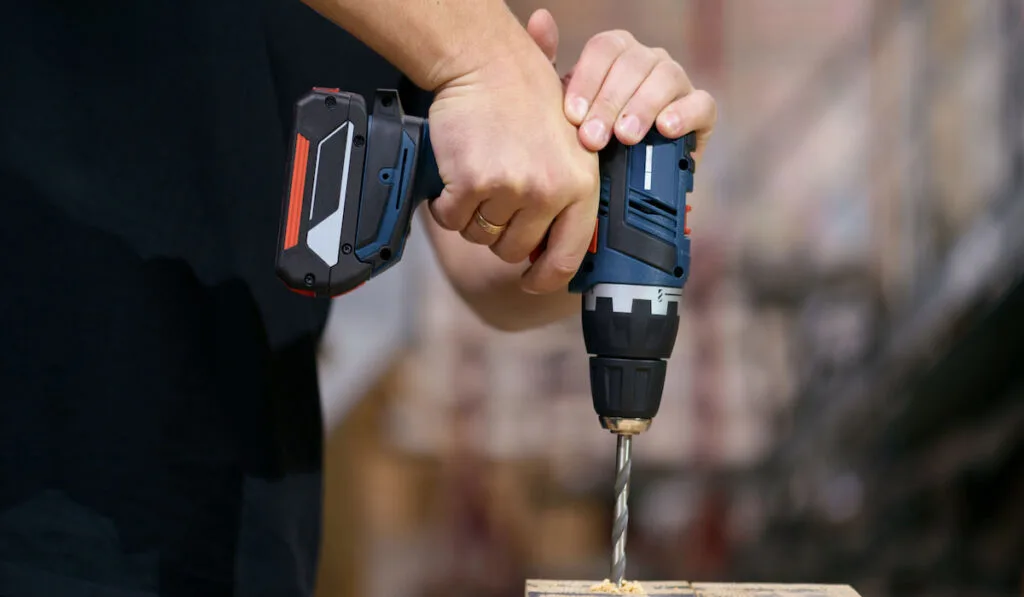
Cordless drills are another popular type of drill that is battery-powered. You can use this type of drill anywhere, which makes it convenient.
Most homeowners have this type of drill, making installing fasteners in drywall and drilling holes easy.
You can also use a cordless drill when you need to drill in metal, wood, or plastic. These drills are convenient when you drive fasteners into wood or plastic.
Nonetheless, cordless drills have little power output compared to other powered drill types. You also have to deal with limited runtime compared to a corded drill.
4. Hammer Drill
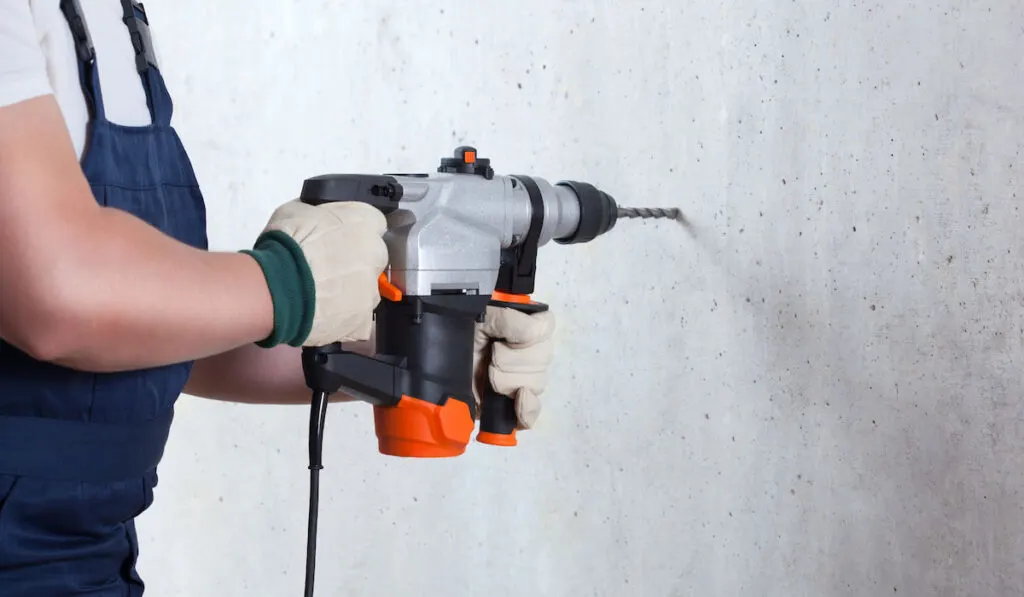
A hammer drill shares a similar design to a drill. The only difference is the added hammer mechanism that chips concrete away through a back-and-forth vibration motion as the motor spins the bit.
With this type of drill, you can select hammer-drilling mode, drilling-only mode, or opt for driving with the clutch mode. That allows you to use the drill without the hammering bit.
Hammer drills are typically used for concrete and can be used to drill and drive into wood, plastic, and metal, as well.
You can also use it for demolition or to remove stuck items on the floor during a remodel.
5. Corded Drill

A corded drill is a cordless version with a wire connecting it to electricity. The drill has more power consistency and allows faster rotations.
Unlike the cordless drill, you don’t have to deal with it running out of power. Corded drills are ideal for heavy-duty drilling that takes time.
6. Rotary Hammer

The rotary hammer drill is a type of hammer drill that’s more powerful and bigger. Unlike the regular hammer drill, the rotary hammer drill may come with two modes.
Hammering and chipping with rotation are standard on most drills. You can also find some with rotation-only mode.
Rotary hammer drills are ideal when you need to break concrete or drill holes up to two inches.
There’s also a D-handle drill, which is a type of rotary hammer drill that’s used for heavy drilling in construction and carpentry.
7. Core Drill
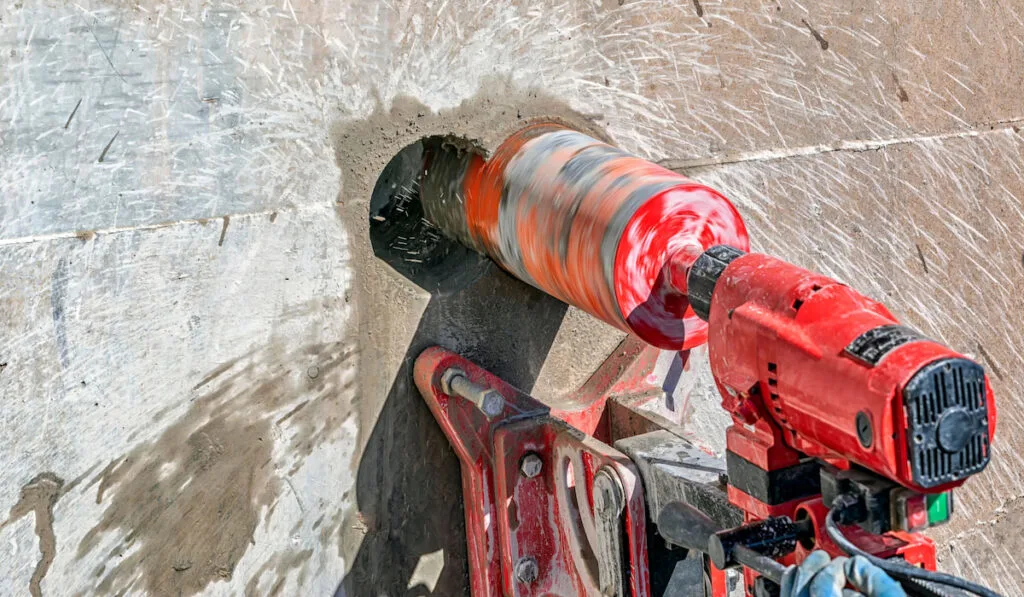
A rare core drill is used to make large holes that extend several feet in concrete. The drill consists of a large motor attached to a frame.
It turns a cylindrical bit to create a removable core rather than grinding out the hole entirely. It doesn’t use a chipping, hammering, or driving mechanism, which is common in most drills.
Core drills allow you to work on concrete to create holes in walls or large openings.
8. Drill Press

The drill press is a stationary drill with motor bits that don’t move. You need to clamp the work and lower the drill bit slowly as you control the rotational speed.
With the drill press, you can make quick, multiple holes with a specific depth and width. That means you can adjust the angle where you need to drill holes.
Furthermore, you can use a drill press on soft and tougher materials.
A drill press works best for a professional with experience making accurate holes. Its stability and precision are unmatched.
Additionally, the drill is very powerful and needs careful handling.
9. Air Drill
An air drill is powered by steady compressed air. These types of drills are often used in industrial and commercial sites.
10. Right Angle Drill
With limited clearance, a right-angle drill is often used for carpentry, plumbing, and electrical work.
It allows you to get into tight spaces like when installing electrical wires or drilling a hole for a drain line.
11. Push Drill
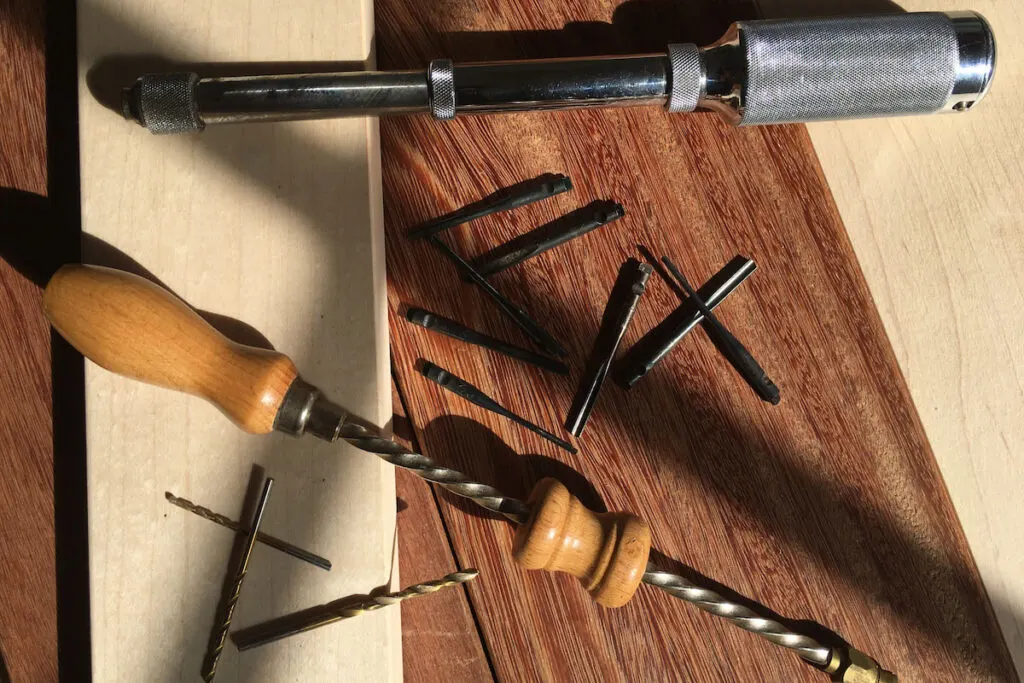
A push drill is another manual, lightweight drill with a spiral ratchet that rotates the bit.
Although small, it comes in handy when drilling holes in wood.
12. Drill Driver
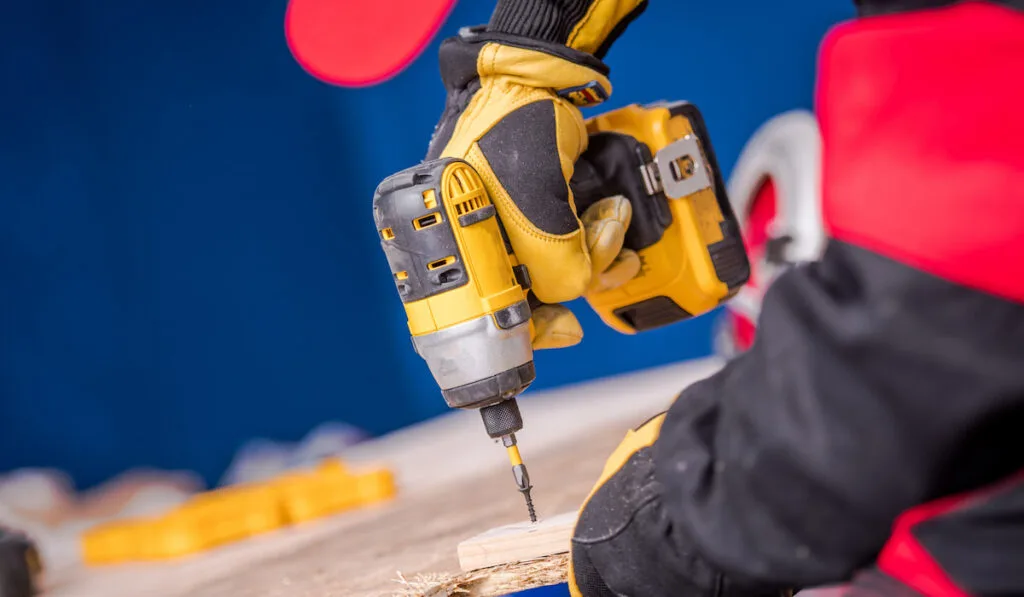
A drill driver is another popular type of drill you can use for various tasks. The drill uses a battery.
It has a chuck fixed to the drill bit that opens and closes around the spindle while the bit spins in both directions. You can adjust the power levels on the drill depending on the project’s needs.
Unlike regular drills, a drill driver allows you to loosen or tighten screws of different thicknesses and sizes.
The versatility of the drill driver means you can use it to install shelves, assemble furniture, and tighten screws.
Additionally, you can drill holes in metal, wood, plastic, and concrete.
13. Earth Auger/Ground Auger
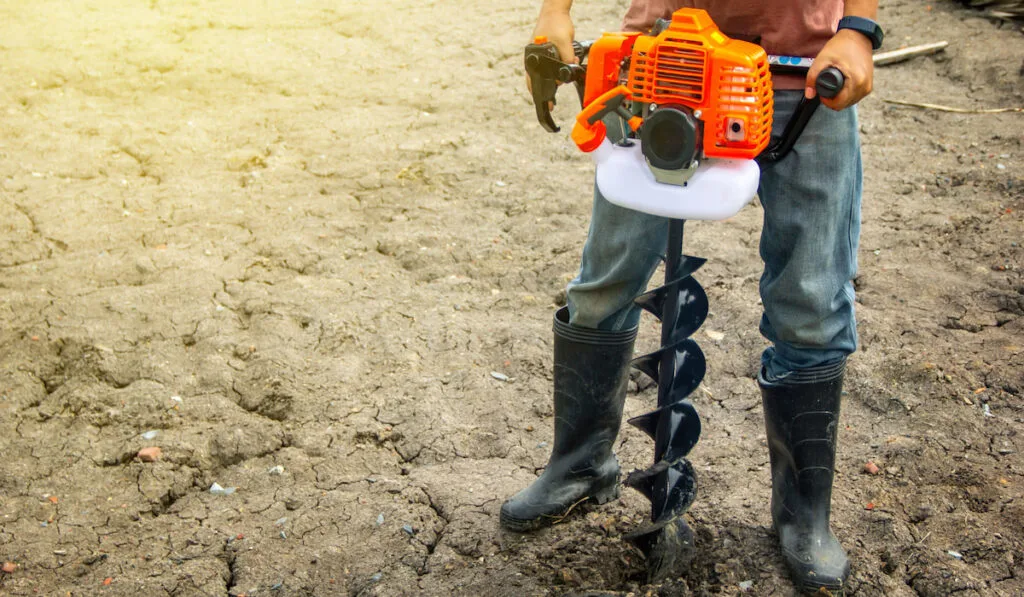
An earth auger or ground auger works best when you need to make holes in the ground. That could be in the snow, ice, dirt, or any of the earth’s surfaces.
Most people use it when setting posts for fences or cutting holes for ice fishing.
The earth drill uses electricity or gas to run the powerful motor.
It also has a big vertical metal tube with a blade attached to the lower side. Apart from making holes, you can use the earth auger to scrape the soil.
14. Screwdriver Drill
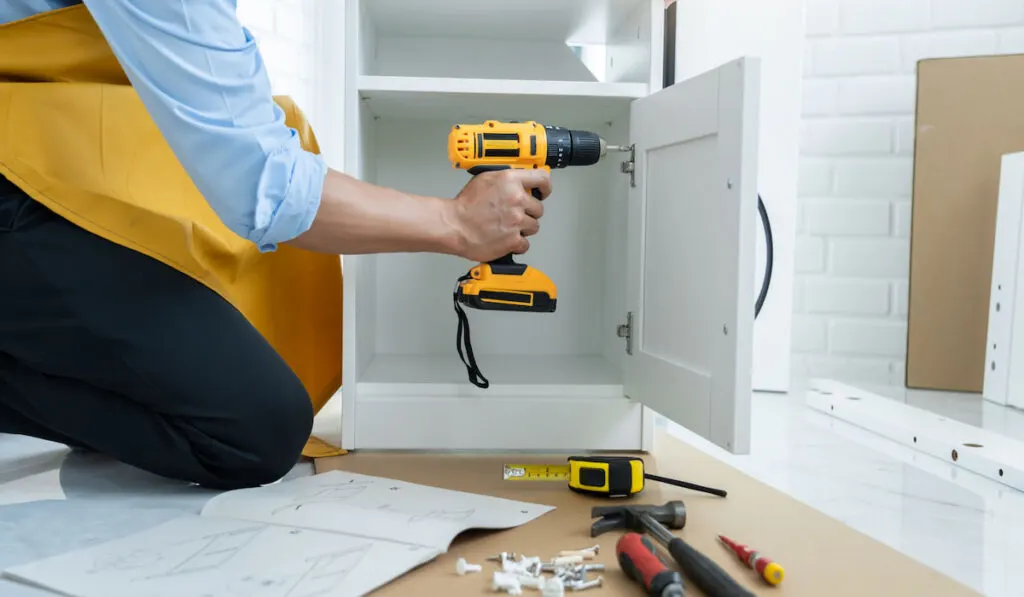
A screwdriver drill is a motor-driven screwdriver that’s simple to use and convenient due to its cordless feature.
It has a motor that spins the bit to pierce through the material. That makes the drill worthwhile when tightening screws in confined areas.
Unlike other drills, the screwdriver drill has fewer rotations per minute to give you better control as you tighten or loosen screws.
15. Benchtop Drill
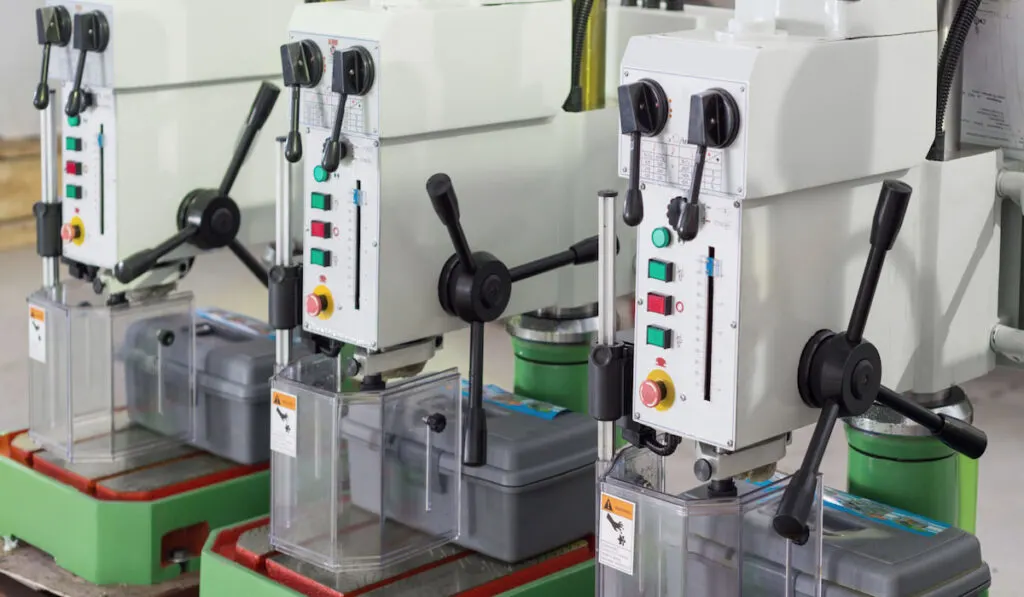
A benchtop drill is mounted on a table and is often used in a workshop or garage for drilling.
The drill has a vertically upright pole and a thick base with a motor attached. You can then place the object you need to drill beneath the motor.
There are different types of bench drills. Some can be carried to your work site, while others need to be installed before you can use them for drilling.
Benchtop drills can drill holes through metal, plastic, and timber. It’s perfect for drilling materials that easily slip off.
16. Impact Driver

An impact driver or impact drill is a specific type that allows you to drive screws into wood and loosen bolts.
Similar to a power drill, an impact driver uses rotational motion to function. The only difference is that an impact driver combines the rotational movement with the hammering section.
Impact drivers have a motor inside that spins the drill bit, and the hammer mechanism strikes the drill sideways. That allows you to drive screws in.
The drill can install, tighten, and loosen screws, making it versatile and valuable in construction.
Final Thoughts
Drills are essential tools for anyone doing house repairs, installing new appliances, or fixing electrical wiring.
Not all drills are created equal. Some drills allow you to drive screws and bore holes, while others have a hammering mechanism to dig through concrete.
Hopefully, with our guide, you’ve learned about some common types of drills available and where to use them.
Resources
- https://www.homedit.com/types-of-drills/
- https://www.homestratosphere.com/types-of-drills/
- https://www.familyhandyman.com/list/types-of-drills/
- https://www.diy.com/ideas-advice/drill-buying-guide/CC_npcart_400184.art
- https://www.electronicshub.org/drill-types/
- https://handymansworld.net/types-of-drills/
- https://happydiyhome.com/types-of-drills/
- https://www.mechanicapproved.com/types-of-drills/
- https://housegrail.com/different-types-of-drills/
